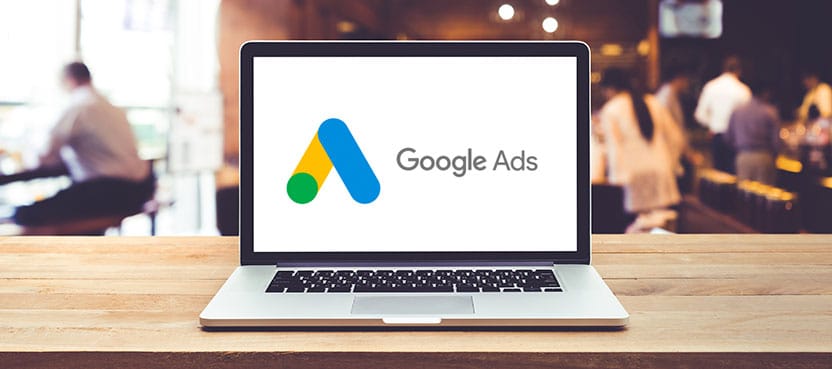
Google Ads: Maximizing Your Business’s Online Visibility
Google Ads, formerly known as Google AdWords, is one of the most powerful online advertising platforms available. It allows businesses of all sizes to place advertisements on Google’s search engine results pages (SERPs), Google Display Network, YouTube, and other partner sites. Google Ads operates on a pay-per-click (PPC) model, meaning advertisers only pay when users click on their ads. It’s an effective way to reach potential customers who are actively searching for products or services, ensuring your business gets noticed at the right time.
How Does Google Ads Work?
Google Ads uses a bidding system where advertisers select relevant keywords—terms that users search for—and create ads targeting those terms. When someone searches for a keyword, Google runs an auction to determine which ads will appear. The results are based on two factors:
- Bid Amount: The maximum amount an advertiser is willing to pay for a click.
- Quality Score: Google’s measure of the relevance and quality of your ad and landing page. The higher the Quality Score, the lower your cost per click (CPC) and the better your ad placement.
The combination of bid amount and Quality Score helps determine your Ad Rank, which affects where your ad appears on the search results page.
Key Benefits of Google Ads
1. Immediate Results
Unlike organic search engine optimization (SEO), which can take months to see results, Google Ads offers instant visibility. Once your ad is live, it can appear in front of potential customers immediately, making it a great tool for driving traffic quickly.
2. Targeted Advertising
Google Ads allows you to target your audience with precision, ensuring your ads are shown to the right people at the right time. You can target based on:
- Keywords: Display your ads to users searching for specific terms.
- Location: Target ads to specific geographic areas, from countries down to cities and neighborhoods.
- Demographics: Focus on users by age, gender, income, and other demographic factors.
- Device: Optimize your ads for mobile, desktop, or tablet users.
- Time: Show ads at certain times of the day or days of the week to match when your audience is most active.
3. Cost Control
With Google Ads, you have complete control over your advertising budget. You can set a daily budget and a maximum cost per click, ensuring you never spend more than you’re comfortable with. Additionally, because Google Ads is performance-based, you only pay when someone clicks on your ad, meaning you’re paying for potential leads or customers.
4. Measurable Results
Google Ads provides detailed data and analytics, allowing you to track every aspect of your campaign’s performance. You can monitor metrics like:
- Click-through Rate (CTR): The percentage of people who clicked on your ad after seeing it.
- Conversion Rate: The percentage of clicks that resulted in a desired action (e.g., making a purchase, signing up for a newsletter).
- Cost per Conversion: How much you’re spending to acquire each lead or sale. This level of transparency enables you to adjust your ads and bidding strategy to improve performance continuously.
5. Remarketing Capabilities
Google Ads offers remarketing, which allows you to show ads to people who have previously visited your website. This keeps your business top-of-mind and encourages users to return to your site and convert. Remarketing ads are highly effective because they target users who have already shown an interest in your business.
Types of Google Ads Campaigns
Google Ads offers several types of campaigns, each designed to achieve different objectives and reach users in various ways:
1. Search Campaigns
Search campaigns are text-based ads that appear on Google’s search results pages when users type in relevant keywords. These ads are great for targeting users who are actively searching for products or services and are ready to make a purchase. They appear as sponsored results above or below organic search results.
2. Display Campaigns
Display ads are image or banner ads that appear across Google’s Display Network, which includes millions of websites, apps, and Google-owned platforms like Gmail and YouTube. These ads are ideal for building brand awareness, as they reach users while they’re browsing online but not necessarily searching for specific products.
3. Video Campaigns
Video campaigns allow you to run video ads on YouTube and other Google partner sites. These ads can appear before, during, or after videos on YouTube, helping you engage with potential customers through visually appealing content. Video ads are especially effective for storytelling, showcasing your brand, and creating a memorable impression.
4. Shopping Campaigns
Google Shopping ads are perfect for e-commerce businesses. These ads showcase product images, prices, and business details at the top of search results, helping users compare products at a glance. When users click on a Shopping ad, they’re taken directly to the product page on your website, making it easier for them to make a purchase.
5. App Campaigns
If you have a mobile app, Google Ads can help you promote it to users across Google Search, Google Play, YouTube, and the Display Network. App campaigns use machine learning to optimize your ads and reach users who are likely to download or engage with your app.
Best Practices for Google Ads Success
1. Effective Keyword Research
Keyword research is crucial for identifying the right search terms to target. Start with broad keywords that describe your product or service and narrow them down to more specific terms. Use tools like Google Keyword Planner to find keyword suggestions and gauge search volume and competition.
- Long-Tail Keywords: Target long-tail keywords, which are more specific and have lower competition. While these keywords may have fewer searches, they tend to attract more qualified leads.
- Negative Keywords: Use negative keywords to prevent your ads from showing for irrelevant searches. For example, if you sell high-end products, you might add “cheap” as a negative keyword to avoid clicks from users looking for budget options.
2. Compelling Ad Copy
Your ad copy needs to be engaging and relevant to capture attention and encourage clicks. Focus on the following:
- Headline: Use your primary keyword in the headline to match the searcher’s intent and make your ad more relevant.
- Value Proposition: Highlight what makes your product or service unique. Include special offers, free trials, discounts, or other incentives.
- Call-to-Action (CTA): Add a clear CTA to tell users what to do next (e.g., “Buy Now,” “Get a Free Quote,” or “Call Today”).
3. Landing Page Optimization
Sending users to a well-optimized landing page is essential for converting clicks into leads or sales. Ensure that your landing page:
- Matches the intent of your ad, so users find what they were promised.
- Is mobile-friendly and loads quickly.
- Includes clear headlines, engaging visuals, and a strong call-to-action.
- Offers easy navigation and a simple, intuitive design.
4. Ongoing Campaign Monitoring and Optimization
Once your Google Ads campaign is live, continuous monitoring and adjustments are crucial for improving performance. Regularly review your metrics, such as:
- Quality Score: Aim to improve your Quality Score by refining ad relevance, keyword targeting, and landing page experience.
- Bid Adjustments: Analyze which keywords are delivering the best ROI and increase bids for those terms. Lower bids for underperforming keywords.
- A/B Testing: Test different ad variations (headlines, copy, CTAs) to see which versions perform better.
Conclusion
Google Ads is a powerful tool that can drive traffic, generate leads, and increase sales for your business. With the right strategy, businesses can create highly targeted campaigns that reach users exactly when they’re looking for relevant products or services. By combining effective keyword research, compelling ad copy, optimized landing pages, and ongoing campaign management, you can maximize your return on investment and achieve long-term success with Google Ads.


